Creative Bravery, Short-Form Video Content
Creative bravery, short-form video content has witnessed a meteoric rise in popularity, particularly among younger audiences. Platforms such as TikTok have spearheaded this trend, captivating millions of users with their engaging, quick-to-consume videos. The appeal of short-form content lies not only in its brevity but also in its ability to capture and hold attention in an increasingly fast-paced digital landscape. As consumer preferences continue to evolve, brands are compelled to reconsider their traditional marketing strategies and pivot towards shorter, more impactful video formats.
The shift in attention spans, especially among millennials and Gen Z, plays a critical role in the ascent of short-form videos. Research indicates that the average attention span has decreased in recent years, necessitating content that is succinct and engaging. Short videos, often lasting only a few seconds, cater to this demand by delivering information and entertainment rapidly, thus optimizing viewer engagement. This format allows brands to convey their messaging effectively without overwhelming or losing the interest of their audience.
Moreover, short-form video content promotes creativity and spontaneity, elements that resonate with younger consumers. It provides an opportunity for brands to showcase their personality, values, and unique storytelling in ways that traditional media cannot. Influencers heavily utilize these platforms, blurring the lines between branded content and genuine user-generated experiences, making it essential for organizations to adopt similar techniques. By leveraging the visual and auditory stimuli of short videos, brands can connect more authentically with their target audiences.
In conclusion, the rise of short-form video content represents a significant shift in how brands communicate with consumers. By embracing this trend, companies can harness its psychological appeal and adapt their marketing strategies to align with the changing landscape of audience expectations, ensuring they remain relevant and impactful in today’s digital marketplace.
Understanding Creative Bravery
Creative bravery is a term that has gained prominence through its association with platforms like TikTok, reflecting a new paradigm in digital content creation. This concept encourages brands and content creators to step beyond traditional storytelling techniques, embracing a more adventurous and innovative approach. At its core, creative bravery involves a delicate interplay of curiosity, imagination, vulnerability, and courage. Each of these elements plays a significant role in shaping content that resonates with audiences on a deeper level.
Curiosity serves as the foundation of creative bravery. It sparks the desire to explore new ideas, challenge norms, and experiment with unique concepts. This inquisitive mindset enables brands to develop content that captures attention and elicits genuine interest. Imagination follows closely, allowing creators to visualize and execute their ideas in dynamic ways. By fostering an imaginative environment, brands can produce captivating narratives that stand out in an increasingly crowded digital landscape.
Vulnerability, often overlooked, is also a crucial aspect of creative bravery. It involves the willingness to share authentic experiences and emotions, thereby creating a connection between the brand and its audience. This openness fosters trust and engagement, as consumers are more likely to relate to and support brands that exhibit genuine human qualities. Finally, courage is essential for taking risks and embracing the unexpected, pushing the boundaries of conventional marketing strategies. It is about daring to speak out, challenge the status quo, and ultimately redefine what successful brand storytelling looks like.
When brands embody creative bravery, they open new avenues for engagement and relationship-building within their communities. By integrating curiosity, imagination, vulnerability, and courage into their content strategies, they can cultivate a more meaningful dialogue with their audiences, leading to loyalty and sustained interest over time.

Strategizing for Impactful Short-Form Videos
In the rapidly evolving digital landscape, brands must navigate a complex environment to create impactful short-form videos. The first essential step in developing an effective video strategy is to understand the target audience. Conducting thorough audience research allows brands to identify their demographics, preferences, and behaviors, which ultimately informs the tone, style, and content of the videos produced. By tailoring content to resonate with specific audience segments, brands can significantly enhance engagement and viewer retention.
After defining the target audience, it is imperative to set clear and measurable objectives for each video project. Objectives might include increasing brand awareness, driving website traffic, or enhancing customer engagement. Having well-defined goals not only provides direction but also helps in evaluating the effectiveness of the video after its release. This strategic approach ensures that every video serves a purpose aligned with the overarching marketing goals of the brand.
Creativity plays a pivotal role in the success of short-form videos. Brainstorming innovative concepts is essential for capturing viewer attention within the limited timeframe. Brands should explore various storytelling techniques, visual aesthetics, and sound elements that align with their identity while also being mindful of trends that resonate with audiences. Collaborating with creative professionals or engaging in workshops can foster fresh ideas that ignite brand storytelling.
Furthermore, integrating brand personality into content fosters authenticity, making it easier to connect with the audience. This can be achieved by employing a consistent voice, unique visuals, and relatable narratives within the videos. Authenticity encourages trust, which is paramount for long-term brand loyalty. Ultimately, a strategic blend of audience understanding, clear objectives, creativity, and authentic brand integration is instrumental in crafting impactful short-form videos that stand out in a crowded marketplace.
Leveraging Data for Video Success
Data plays a crucial role in the creation and optimization of short-form video content, allowing brands to make informed decisions based on empirical evidence rather than intuition alone. By leveraging data analysis, businesses can tailor their video content to meet the preferences and behaviors of their target audiences. Understanding key performance indicators (KPIs) is essential for assessing the effectiveness of video campaigns. These metrics encompass a range of factors including view count, engagement rate, completion rate, and audience retention. Each KPI provides unique insights into how well the content resonates with viewers, thus guiding future strategies.
A/B testing serves as a pivotal tool in this process, enabling brands to compare two versions of a video to discern which one performs better. This method allows marketers to experiment with different elements such as visuals, messaging, and call-to-action prompts. The results from A/B testing can significantly influence content decisions by highlighting which variations lead to higher engagement and viewer satisfaction. It is essential for brands to continually iterate on their video content based on these findings, ensuring they remain relevant and engaging to their audience.
Furthermore, integrating audience engagement metrics into a brand’s analytics efforts is vital. Metrics such as likes, shares, comments, and watch time offer insights into what captivates viewers and fosters interaction. Companies can analyze these behaviors to refine their storytelling techniques, boost emotional connections, and create compelling narratives that attract viewers’ attention. Overall, organizations that actively utilize data to drive their video strategies are more likely to experience enhanced performance, increased brand visibility, and improved audience loyalty. In conclusion, prioritizing data analysis in short-form video content creation not only paves the way for better outcomes but also empowers brands to connect authentically with their audiences.
The Role of AI in Video Content Creation
The integration of Artificial Intelligence (AI) into video content production represents a transformative shift for brands seeking to enhance their marketing strategies. With the increasing importance of short-form videos in capturing audiences on platforms like TikTok and Instagram, leveraging AI not only elevates the content quality but also streamlines the creation process. Various AI tools facilitate content creation by automating mundane tasks, allowing creators to focus on the imaginative aspects of video production.
For instance, AI-driven software can analyze vast datasets to identify trending topics and user preferences, enabling marketers to craft videos that resonate effectively with their target audience. These tools often employ advanced algorithms to suggest content ideas, video formats, and even optimal posting times, maximizing viewer engagement. By harnessing these insights, brands can produce videos that align with current trends and consumer interests, which is crucial in the ever-evolving digital landscape.
Moreover, AI plays a pivotal role in social media listening, providing brands with insights into audience sentiment and feedback. Utilizing social listening tools, companies can assess how their content is perceived in real-time, allowing for quick adaptations in messaging and approach. This heightened awareness cultivates stronger brand awareness and loyalty among consumers, as they recognize their preferences are understood and valued.
Furthermore, AI significantly enhances ad targeting capabilities. By analyzing user data and behavior patterns, brands are able to deliver more personalized ad experiences through short-form videos that appeal directly to potential customers. AI also assists in influencer research and collaboration, identifying suitable social media influencers whose audiences align with the brand’s objectives. By effectively leveraging AI technologies, brands can navigate the complexities of short-form video content creation and marketing, ultimately leading to increased audience engagement and brand recognition.
Best Practices for Engaging Younger Audiences
As brands navigate the landscape of short-form video content, understanding how to effectively engage younger audiences becomes paramount. One of the most crucial strategies involves blending entertainment with information. Younger demographics often seek content that is not only informative but also captivating. By incorporating storytelling techniques, brands can transform mundane messages into entertaining narratives that resonate with this audience. This approach enhances viewer retention and encourages sharing, thus amplifying reach.
Another effective tactic is to encourage user-generated content (UGC). Younger audiences appreciate authenticity and often engage more when they see relatable, real-life experiences from their peers. Brands can create challenges or campaigns that invite users to create and share their own short-form videos. This not only fosters community engagement but also promotes a sense of belonging among users, making them feel more connected to the brand. Additionally, showcasing UGC through official brand channels can enhance credibility and demonstrate appreciation for the audience’s creativity.
Creating shareable moments is also essential in crafting content that resonates with younger viewers. Brands should focus on producing videos that include humor, clever visuals, or emotional storytelling, making it more likely for viewers to share on their social media platforms. This not only broadens the audience base but also cultivates organic reach, driven by peer recommendations rather than paid promotions.
Lastly, leveraging current trends while staying true to the brand’s core values is crucial. Younger audiences are often quick to detect inauthenticity, so brands must ensure that their content reflects genuine alignment with their values and mission. Keeping an eye on trending topics, challenges, and memes can provide opportunities for timely and relevant engagement without compromising authenticity. By integrating these best practices, brands can successfully capture the attention and loyalty of younger demographics in the ever-evolving world of short-form video content.
Collaborating with Agencies for Enhanced Reach
In the ever-evolving digital landscape, brands increasingly recognize the necessity of short-form video content as a vital tool for engaging audiences. However, to maximize the impact of these creative assets, partnering with a specialized creative agency can prove invaluable. These agencies bring advanced marketing expertise, innovative technologies, and fresh perspectives that are crucial for navigating the intricacies of contemporary media consumption.
One of the primary advantages of collaborating with creative agencies is their access to a wealth of industry knowledge and experience. These professionals are adept at understanding audience behaviors and preferences, enabling brands to tailor their messages effectively. By leveraging analytics and insights, agencies can craft compelling short-form videos that resonate with target demographics, ensuring that each piece of content is strategically aligned with broader marketing goals.
Furthermore, agencies often utilize cutting-edge technologies that can significantly enhance the production quality of short-form videos. From sophisticated editing software to state-of-the-art filming equipment, these resources can elevate a brand’s visual storytelling. This technological edge not only improves the aesthetic appeal of videos but also allows for innovative formats and interactive elements that can engage viewers more effectively. Brands that partner with creative agencies can thus benefit from professional production capabilities that may be challenging to achieve in-house.
Another key aspect of collaborating with agencies is the fostering of creativity through diverse perspectives. Agencies typically comprise teams of creative thinkers who collaborate to generate original ideas that can captivate audiences. This dynamic promotes experimentation and risks that may lead to breakthrough concepts, which is especially pertinent in the realm of short-form video content. By pooling creative resources, brands can expand their horizons and discover innovative ways to connect with their audiences.


